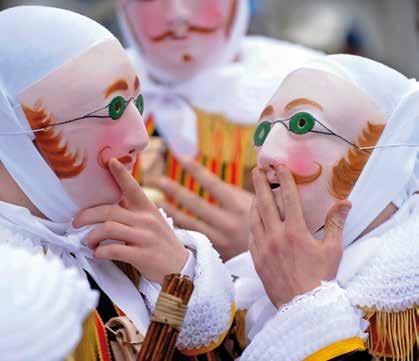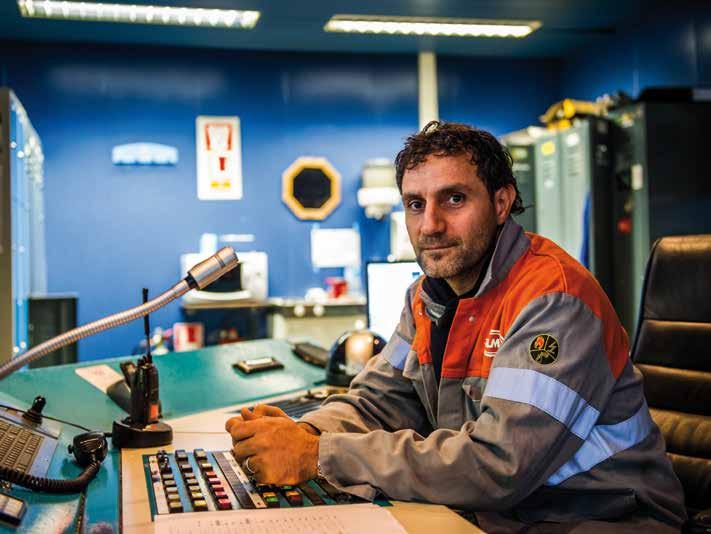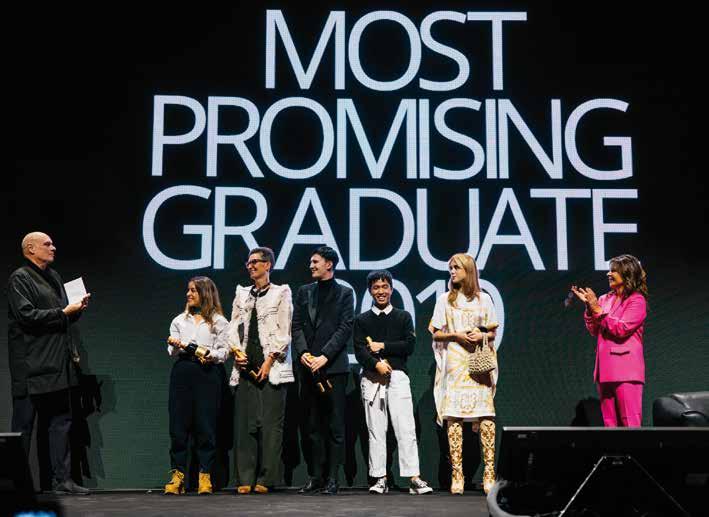
4 minute read
Our pick of cultural events in
2
4
1 30

3

4


EXHIBITION
NATURE MORTE/NATURE VIVANTE 1
Nature morte, or still life, is an enduring style of painting, with its focus on aesthetically pleasing – and often gourmet – delights: think cut flowers, bright red wine and bunches of plump grapes. But it also alludes to humans’ manipulation of these natural elements. While beautiful, these paintings show elements in decay, struck down by the human need for sustenance or control – or, in modern times, simple greed. Scientists, architects and artists come together in this exhibition at Grand-Hornu to illustrate just how resilient nature is in the face of a human race bent on destroying it.
UNTIL 8 MARCH cid-grand-hornu.be
HERITAGE
CARNIVAL 2
One of the continuing charms of Carnival is the unique spin cities put on it. Wallonia has some of Europe’s most famous Carnival celebrations, not least because of their quirky characters. Don’t miss Binche, where more than 1,000 figures called Gilles march through the streets on Shrove Tuesday, sporting striped suits and wooden clogs. They don sky-high hats of ostrich feathers later in the day to throw oranges to the crowd. Other Carnival highlights are in Malmedy, where you’ll meet the Grosse Police and the dancing Hanguèts, and in Stavelot, with their pointy-nosed Blancs Moussi.
23-25 FEBRUARY carnavaldebinche.be malmedy-tourisme.be
EXHIBITION
DOTREMONT AND THE SURREALISTS 3
While the CoBrA art movement was short-lived in years, it was long on influence. It’s Karel Appel’s bright, messy colours or Asger Jorn’s grotesque figures that usually spring to mind, but the 20th-century avant-garde collective owes its name (referring to Copenhagen, Brussels and Amsterdam) to Christian Dotremont. Before that, however, the Brussels poet and painter was a Surrealist. This free exhibition in the capital puts his archives on show for the first time and brings to life a turbulent wartime period in the arts.
UNTIL 9 FEBRUARY belvue.be
JAZZ FESTIVAL
DJANGOFOLLIES 4
Jazz guitar legend Django Reinhardt was born in Wallonia, and this annual festival is an ode to his talent, influence and remarkable life. He learned to play string instruments growing up in gypsy camps outside Paris. It was the gift of a banjo when he was still a boy that would set Reinhardt on the path to creating gypsy jazz and make him the greatest jazz guitarist the world has ever known. Djangofollies takes place across Wallonia and Brussels and features local and international ensembles – like the Kamao Quartet, pictured –that put strings in the spotlight.
14-31 JANUARY djangofolllies.be
THE CIRCLE OF LIFE
Marie Pok is the director of CID, the Centre for Innovation and Design at GrandHornu. Its exhibition Nature Morte/Nature Vivante, curated by Veerle Wenes, Ralph Collier and Françoise Foulon, brings together designers, architects and artists to question the relationship between humans and nature.
“The concept of nature morte, or still life, is a constant return trip between life and death. The hourglass evokes the next death, but, at the same time, it draws attention to the urgency of life. For example, a video in the exhibition by Lieve Van Stappen has all the appearances of wallpaper, but looking closely we see that the flowers open and slowly fade, one after the other… It evokes the idea of blossoming, of life. But in fact, she created it following a double mastectomy due to cancer. Day after day, month after month, she painted roses at every stage in their life cycle. It visualises the evolution of the disease, and the threat of death.
Some artists use living materials. Nurit Bar-Shai created a series of shapes on petri dishes that illustrate the social behaviour of bacteria. Their system of self-organisation is surprisingly complex, and they have a highly perfected means of communication. We can see an incredible variety of results with only slight alterations to their initial environment. Plastic Reef by Maarten Vanden Eynde is an agglomeration of plastic debris taken from various oceans. It poses crucial questions about pollution and coral reefs. According to scientists, their gradual disappearance is due to the absorption of micro-plastics.
In the installation Aqua con gas by art cooperative Various Artists, the immersion of bonsai trees recreates the image of flooded olive groves and refers to the enormous impact of agriculture on nature. During a journey through southern Europe, Various Artists witnessed upheavals in the landscape due to the construction of hydroelectric dams. Such investments, subsidised by the EU, are designed to supply the energy and water for intensive agriculture, to the detriment of the local fauna and flora. Next year, CID will host three exhibitions that explore climate, food, ecology and water issues. Plant Fever, for example, will focus on how to work with plants in production processes. Plants develop resilience and communication strategies that inspire scientists, engineers and designers to develop more sustainable and efficient products.”
cid-grand-hornu.be







